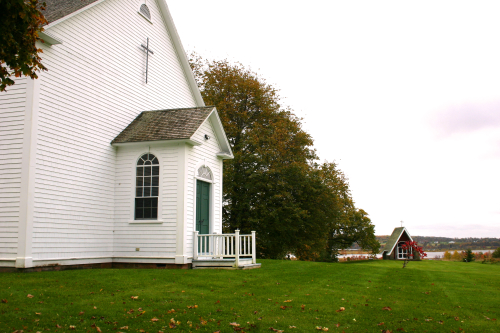St. Andrew’s Chapel is a reconstruction of a Roman Catholic church built in 1805, by Scottish settlers under the direction of Angus Bernard MacEachern, who is listed as a National Historic Person. St. Andrew’s Chapel was the first major church in Prince Edward Island. It is a fine example of 18th Century architecture with original round-headed windows, a style used by early English and Scottish settlers. Replaced by a new and larger church in 1862, it stood abandoned until 1864 when it was moved 20 miles over the ice-covered river into Charlottetown, a feat considered little less than miraculous at that time. It became part of St. Joseph’s Convent and School. Until the school’s closure in 1975 this building served the young people of Charlottetown. In 1987 fire devasated the old convent but many timbers from the 1805 church miraculously remained. A group known as The Friends of St. Andrew’s returned the chared timbers to St. Andrew’s where they were reconstructed into St. Andrews Chapel.
Angus Bernard MacEachern, a pioneer missionary was born in 1759. He immigrated from Scotland in 1790. For 45 years he ministered zealously to the people of PEI, the Magdalen Islands, and to large sections of Nova Scotia and New Brunswick. Appointed Suffragan to the Bishop of Quebec in 1819, he became, in 1829, the first Bishop of Charlottetown with jurisdiction over PEI, New Brunswick and the Magdalen Islands. He founded the Island’s first institution of higher learning at St. Andrews in 1831. This distinguished ecclesiastical and civil leader died in 1835. A National Historical Monument to Angus Bernard MacEachern, First Bishop of Charlottetown, has been erected next to the Church and and the Bishop is buried in an adjacent crypt.

